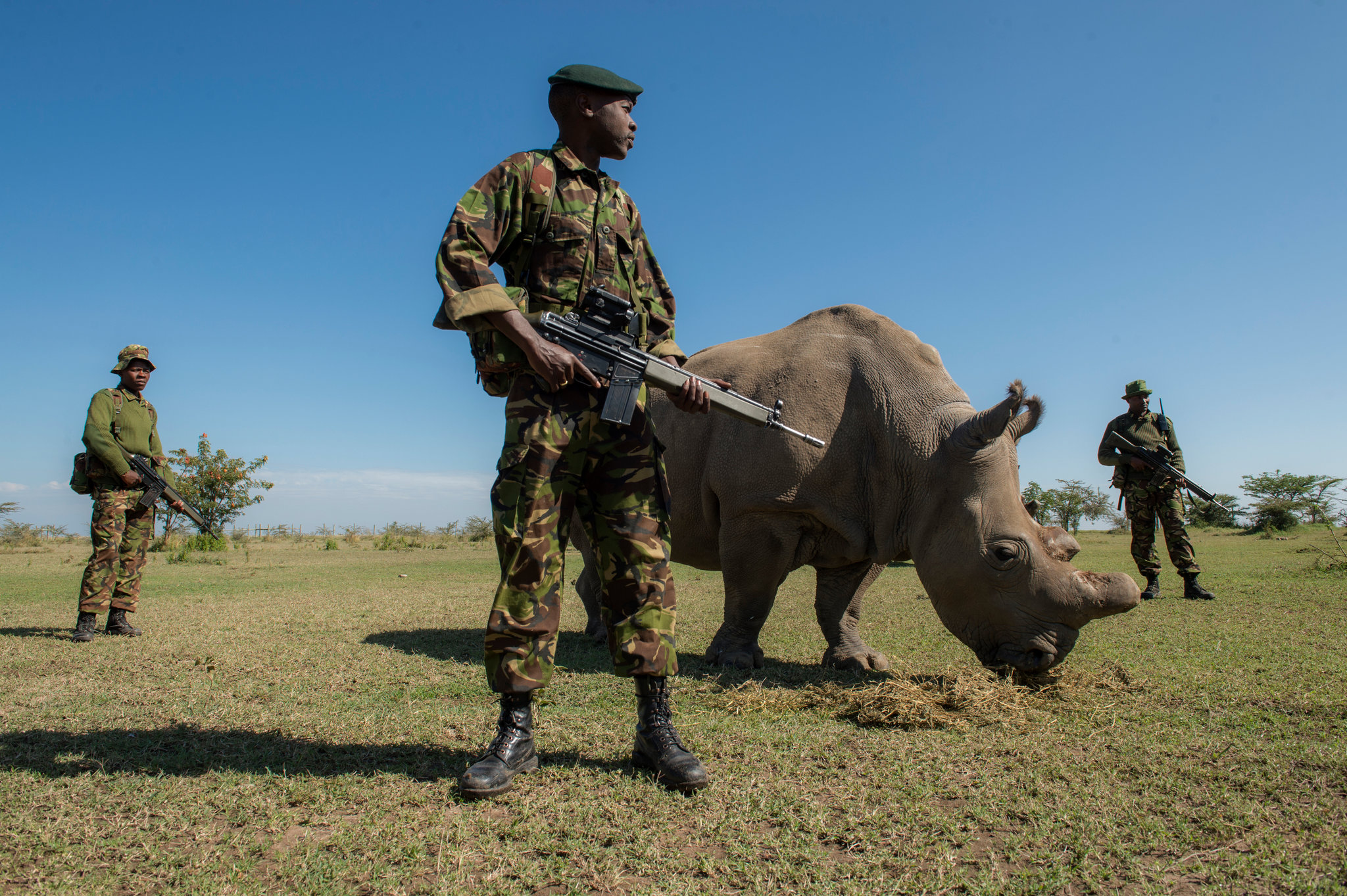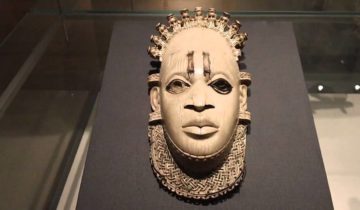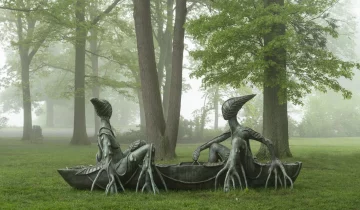African Artists and Wildlife Conservation: Art with a Purpose
In the vast and diverse continent of Africa, wildlife conservation is a matter of paramount importance. Its unique ecosystems host a plethora of animal species, many of which are endangered due to human intervention, habitat loss, and climate change. It is in the face of such adversity that the arts play a crucial role in raising awareness and promoting conservation efforts. Local African artists, in particular, have been actively engaging with their communities, using their talents to not only entertain but also educate and inspire people to preserve their natural heritage. In this journal, we shall explore the profound impact African artists have had on wildlife conservation, demonstrating that their work truly has a purpose beyond mere aesthetics.
Historical Context of African Artists and Wildlife Conservation
Throughout the ages, art has played a vital role in African societies, with traditional art forms often reflecting the close relationship between people and nature. From intricate sculptures depicting animals to vibrant paintings of flora and fauna, the reverence for the natural world has been an integral part of African art. As the global environmental crisis began to unfold, contemporary African artists increasingly turned their attention to the subject of conservation, using their creative prowess to address the urgent need to protect their continent’s wildlife.
Notable African Artists and Their Contributions to Wildlife Conservation
Wildlife Painters and Sculptors
David Koloane: South African artist David Koloane was a trailblazer in his field, using his paintbrush to explore and express the challenges faced by African wildlife. His evocative paintings, such as “The Dog Series,” which features stray dogs scavenging in the urban sprawl, highlight the impact of human encroachment on animal habitats. Koloane’s work has inspired countless others to confront the issue of wildlife conservation through art.
Bruce Onobrakpeya: Nigerian artist Bruce Onobrakpeya is known for his innovative printmaking techniques, which he employs to create captivating images of endangered species. His works, such as “Sarus Crane,” draw attention to the plight of these animals and their dwindling populations, urging viewers to reflect upon the consequences of their actions on the natural world.
Thonton Kabeya: Congolese artist Thonton Kabeya is renowned for his sculptures that portray the rich biodiversity of Africa’s rainforests. He painstakingly crafts each piece using recycled materials, instilling a sense of urgency in the viewer regarding the importance of conservation efforts. Kabeya’s art serves as a poignant reminder of the fragility of our ecosystems and the need to protect them.
Wildlife Photographers and Filmmakers
Beverly Joubert: Beverly Joubert, together with her husband Dereck, is a prominent wildlife photographer and filmmaker from Botswana. Their award-winning documentaries, such as “The Last Lions” and “Eye of the Leopard,” have brought the plight of Africa’s big cats to global attention. By showcasing these majestic animals in their natural habitat, the Jouberts’ work has played a crucial role in raising awareness about the need for conservation efforts to ensure their survival.
Greg du Toit: South African photographer Greg du Toit’s striking wildlife images have graced the pages of prestigious publications like National Geographic. Du Toit is a staunch advocate for conservation, often working in collaboration with NGOs to document threatened species and their habitats. His breathtaking photographs serve as a visual testament to the beauty and fragility of Africa’s wildlife, inspiring countless individuals to support conservation initiatives.
Ami Vitale: Ami Vitale, a renowned photojournalist, has spent decades capturing the rich tapestry of African wildlife through her lens. Her poignant images of animals such as Sudan, the last male northern white rhinoceros, have brought global attention to the devastating effects of poaching and habitat loss.
Vitale’s work has not only raised awareness but has also contributed to tangible conservation efforts, as her photography has been used to raise funds for organizations dedicated to preserving Africa’s threatened species.

Performing Artists and Musicians
Sami Dan: Ethiopian musician Sami Dan uses his music to raise awareness about the importance of wildlife conservation. His song “Giraffe” is a heartfelt tribute to the dwindling population of giraffes in Africa and emphasizes the need to protect them. By blending traditional Ethiopian music with contemporary styles, Sami Dan has been successful in reaching a wide audience and encouraging them to support conservation efforts.
Sarabi: Kenyan theater group Sarabi has gained international recognition for their powerful performances that address pressing environmental issues. Their plays, such as “The Last Dance of the Elephants,” highlight the devastating impact of poaching and the illegal ivory trade on Africa’s elephant population. Through their captivating storytelling and impassioned acting, Sarabi has inspired audiences to take action and support wildlife conservation initiatives.
Nora Chipaumire: Zimbabwean dancer and choreographer Nora Chipaumire uses her art to explore the complex relationship between humans and the natural world. Her dance performances often incorporate themes of conservation, drawing attention to the fragile balance of ecosystems and the need for protection. Chipaumire’s innovative work has inspired countless individuals to reflect upon their role in preserving Africa’s wildlife.
Collaboration between Artists, NGOs, and Governments
African artists have not only used their individual talents to promote wildlife conservation, but they have also collaborated with NGOs and government organizations to maximize their impact. Art exhibitions, festivals, and fundraising events are often organized to raise awareness about conservation issues and generate funds to support various initiatives.
Public art installations, such as murals and sculptures, are also becoming increasingly common across Africa, showcasing the beauty of the continent’s wildlife while reminding viewers of their responsibility to protect it. Educational programs and workshops that incorporate the arts have proven to be effective in engaging local communities and fostering a sense of pride and ownership in conservation efforts.
Impact of African Artists on Wildlife Conservation
The contributions of African artists to wildlife conservation are undeniable. By raising awareness through their captivating works, they have inspired action and encouraged individuals to become more involved in conservation initiatives. Their influence has extended beyond their immediate audiences, reaching policymakers and decision-makers, resulting in tangible improvements in wildlife protection.
Moreover, African artists have played an essential role in fostering a sense of pride and ownership within local communities. By emphasizing the unique beauty and value of their natural heritage, these artists have inspired countless individuals to take responsibility for preserving their environment and its inhabitants.
In conclusion, the significance of African artists in the realm of wildlife conservation cannot be overstated. Through their diverse talents and tireless efforts, they have made an indelible mark on the conservation movement, ensuring that their work serves a purpose beyond mere aesthetics.
As the world continues to grapple with environmental challenges, the importance of art in addressing these issues will only grow. By supporting African artists and conservation initiatives, we can foster greater collaboration and innovation in the intersection of art and conservation, paving the way for a more sustainable future for Africa’s wildlife and its people.





 No products in the basket.
No products in the basket.